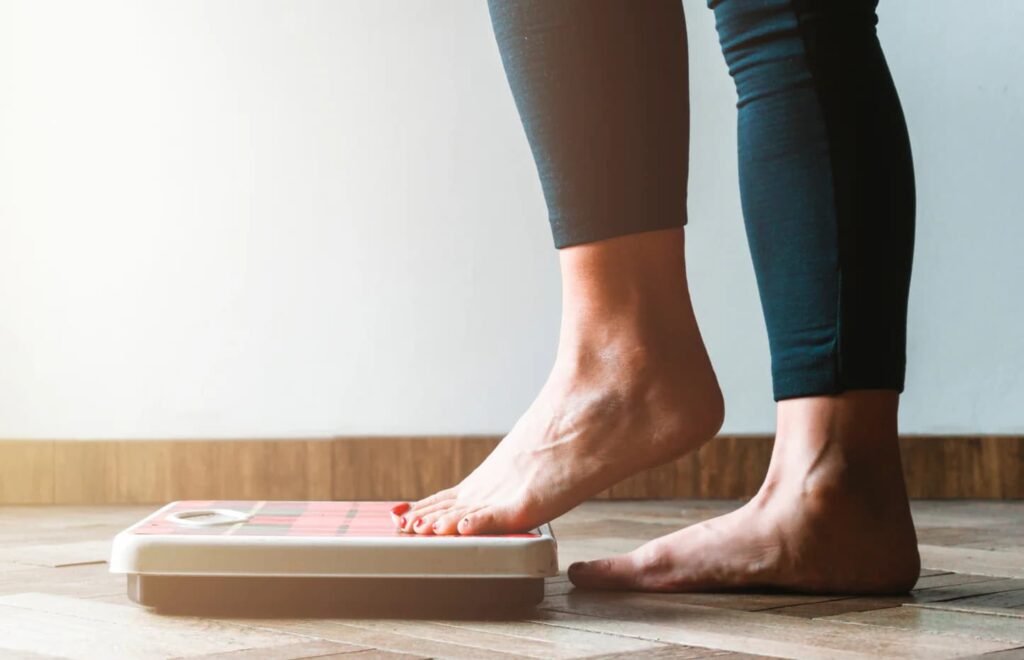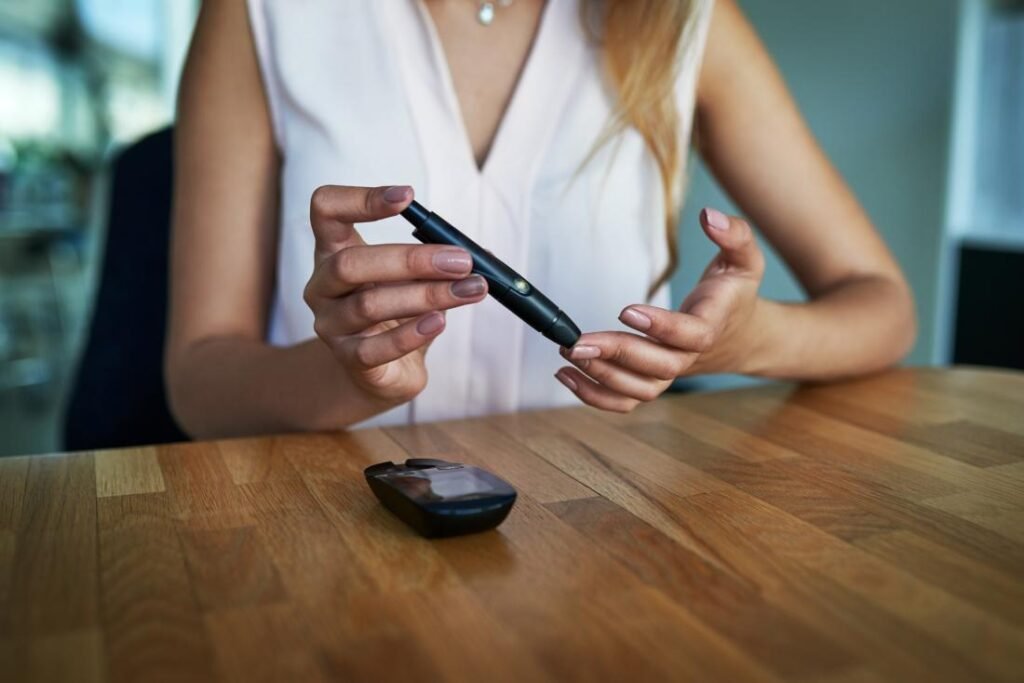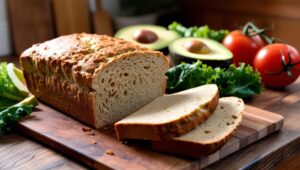Table of Contents
ToggleStepping on the scale, day after day, only to see the same number staring back can be tough. I’ve been there, and I know how frustrating it feels to hit a weight loss plateau. But don’t give up – you’re not alone, and there are ways to get past this tough phase.
The keto diet has changed many lives, including mine, by helping people lose weight and improve their health. But, the journey isn’t always smooth, and hitting a plateau can be tough. In this article, we’ll look at why keto plateaus happen and give you tips to get your fat-burning engine going again and reach your goals.
Key Takeaways
- Keto weight loss plateaus are a common challenge faced by many individuals on the ketogenic diet.
- Understanding the factors that can contribute to a plateau, such as calorie and carb intake, lifestyle factors, and hormonal imbalances, is crucial for overcoming them.
- Strategies like adjusting macros, increasing physical activity, managing stress, and incorporating intermittent fasting can help break through weight loss stalls.
- Patience and persistence are key when navigating a keto plateau, as the body often needs time to adapt to the dietary changes.
- Regularly tracking progress and making incremental adjustments can help you overcome plateaus and continue your weight loss journey on the keto diet.
Understanding Keto Weight Loss Plateaus

At first, the keto diet can lead to quick weight loss because of glycogen depletion and water loss. But this isn’t the same as losing body fat. Switching to fat-burning mode, or keto-adaptation, can take 2-8 weeks. Your body must adjust to using fat as its main fuel, which can cause a weight loss plateau.
Losing Weight vs. Losing Fat on Keto
It’s key to know the difference between losing weight and losing fat on the keto diet. The first weight loss is often due to water loss and glycogen depletion, not fat. As your body moves into the fat adaptation process, weight loss may slow down, causing a keto plateau.
The Transition to Fat-Burning Mode
Switching to ketosis and fat-burning takes time as your body gets used to using fat for energy. Why do keto plateaus happen is that your body is learning to burn fat efficiently, not carbs. This process may slow down weight loss at first, but it’s crucial for long-term fat-burning success on the keto diet.
“Transitioning to fat-burning mode, also known as keto-adaptation, can take 2-8 weeks depending on your metabolism.”
| Metric | Recommended Range |
|---|---|
| Carbohydrate Intake | 20-50 grams per day |
| Weekly Exercise | 150 minutes of moderate to vigorous activity |
| Ketone Levels | 1.5 to 3.0 mmol/L |
Tracking Your Carb and Calorie Intake
Keeping your carb intake low is key to staying in ketosis, a state where your body uses fat for energy. Small hidden carbs can mess up this process and stop your weight loss. The keto diet also helps control hunger hormones, but you can still eat too much and not lose weight.
Using tools like the Carb Manager app helps you track carbs and calories. This way, you can make sure you’re eating enough carbs to stay in ketosis and keep a calorie deficit for weight loss.
Keeping Carbs Low for Ketosis
A 1-year study found people with type 2 diabetes on a low-carb diet lost weight fast for 9 months, then stabilized for 3 months. But, eating too many carbs can lead to a weight loss stop. Tracking carbs helps spot hidden carbs that might be slowing your progress.
Operating at a Calorie Deficit
The keto diet helps control hunger, but you can still eat too much and not lose weight. Sometimes, you might stop losing weight for a few months before losing more. Keeping an eye on your calories and adjusting them can help you stay in a calorie deficit for ongoing weight loss.
By tracking your carbs and calories, you can find and fix the issues causing your weight loss to stall. This can help you move forward on your keto journey.
Monitoring and Optimizing Ketone Levels

It’s key to check your ketone levels to stay in nutritional ketosis on the keto diet. These levels show if your body is using fat for energy well. By testing your ketones often, you can tweak your diet to keep them in the right range of 0.5 to 3.0 mmol/L of beta-hydroxybutyrate (BHB).
Studies say the right ketone levels for ketosis are 0.5–3 mmol/L in blood. Achieving nutritional ketosis means your ketones hit 0.5. Light ketosis is 0.5 to 1.5 mmol/L, and the best levels for losing weight are 1.5 to 3 mmol/L. A study showed 82 percent of people with ketones between 1.6 and 3 mmol/L stayed seizure-free, proving the health perks of these levels.
If your ketone levels fall, it might mean you need to change your diet. You could eat fewer hidden carbs or add more fat to stay in a fat-burning state. By keeping an eye on your measuring ketone levels, you’ll know you’re in nutritional ketosis. This helps you adjust your keto biomarkers for better weight loss.
Addressing Lifestyle Factors for Keto Plateau
The keto diet is great for losing weight, but other factors matter too. Getting enough sleep and managing stress are key to keeping insulin levels right, controlling hunger, and boosting metabolism. These lifestyle changes can help you get past a keto plateau and meet your weight loss goals.
Optimizing Sleep for Weight Loss
It’s important to sleep 7-9 hours each night for keto diet success. Poor sleep can raise cortisol levels, making it harder to lose weight. Good sleep habits, like a regular sleep schedule and calming bedtime routines, are vital.
Managing Stress and Cortisol Levels
Too much stress can stop you from losing weight on the keto diet. High cortisol levels can mess with your fat burning and increase belly fat. Using stress-reducing activities like yoga, meditation, or deep breathing can help keep cortisol in check and support weight loss.
Improving your sleep and managing stress can make a big difference in your weight loss journey. This holistic approach can help you break through a keto plateau and achieve lasting weight loss.
“Adequate sleep and effective stress management are just as crucial for weight loss as following a keto diet. Addressing these lifestyle factors can help you overcome plateaus and reach your goals.”
Boosting Protein Intake and Muscle Mass

Many people on the keto diet worry that eating more protein will stop them from staying in ketosis. But studies show that moderate to high protein levels (about 30% of total calories) can work well with weight loss on the keto diet. Protein is key for keeping muscle mass up, which helps with a healthy metabolism and can help you get past a weight loss plateau.
To get the most out of protein intake for keto, aim for 0.8 to 1.0 grams of protein for every pound of your body weight. This, along with strength training, can be a strong way to beat a keto plateau and support muscle mass and weight loss.
- The usual keto diet mix is 70-80% fat, 20-25% protein, and 5-10% carbs.
- It’s suggested to eat 1.2-2.0 grams of protein per kilogram of body weight daily for building muscle on a keto diet.
- How well you build muscle on a keto diet depends on protein, carbs, and calories.
By making sure you get enough protein, especially with strength training, you can keep your muscle mass up and get past a keto weight loss plateau. This balanced method helps keep your metabolism healthy and can help you meet your fitness goals on the keto diet.
“Protein is essential for maintaining muscle mass, which supports a healthy metabolism and can help break through a weight loss plateau.”
Keto Plateau and Intermittent Fasting
Intermittent fasting is a diet that switches between eating and fasting. It can help you get past a keto plateau. By eating less often, you can avoid overeating and help your body use fat for energy. There are many ways to do this, like the 16/8 method, OMAD, 5:2 fasting, and alternate-day fasting. Increasing how long you fast can also help you lose weight on the keto diet.
Studies show that intermittent fasting can lead to fat loss and less hunger. It helps burn glycogen and gets you into ketosis faster. Adding this to your keto diet can help you break through a weight loss plateau.
- The 16/8 protocol involves fasting for 16 hours and eating within an 8-hour window.
- OMAD (one meal a day) requires consuming all your daily calories in a single meal, typically within a 1-hour window.
- The 5:2 fasting plan involves eating normally for 5 days and restricting calories to 500-600 for the remaining 2 days.
- Alternate-day fasting involves fasting every other day, consuming either no calories or a reduced-calorie intake on fasting days.
Increasing how long you fast can help you lose weight on the keto diet. Using intermittent fasting can help you get past the keto plateau. This way, you can keep moving towards your health and fitness goals.
“Incorporating intermittent fasting alongside a keto diet may aid in fat loss and reducing cravings, with long fasting periods helping in glycogen burning and quicker ketosis attainment.”
Remember, intermittent fasting isn’t right for everyone. It’s important to find a method that fits your life and needs. Always talk to a healthcare professional or a nutritionist to create a plan that suits you. They can help you break through your keto plateau.
Conclusion

Reaching a plateau on the keto diet can feel tough, but it’s a common hurdle. With the right strategies, you can get past it. Keep an eye on your carb and calorie intake, make sure your ketone levels are good, and look after your sleep, stress, and protein.
Remember, losing fat takes time, so be patient and keep going. Try things like intermittent fasting, tweak your macronutrient ratios, and celebrate non-scale victories like better energy and fewer cravings. Don’t hesitate to get support from the keto community and adjust your keto plan as needed to get past any plateaus.
The keto diet is a great way to lose weight and improve your health, but everyone’s journey is different. By solving the common problems that cause a keto plateau, you can stay motivated and keep moving forward. This way, you can reach your keto diet goals.
FAQ
What is a keto plateau and why does it happen?
A keto plateau means you’re not losing weight on the ketogenic diet anymore. This happens when your body starts to use fat for energy (keto-adaptation). This change can take 2-8 weeks. Your body needs time to switch from using glucose to fat as its main energy source.
How can I tell if I’m losing weight vs. losing fat on the keto diet?
At first, you might lose weight quickly on the keto diet because you’re losing glycogen and water. But losing actual fat takes longer and needs you to eat fewer calories. It’s important to know the difference to set realistic goals and get past a keto plateau.
What factors can contribute to a keto plateau?
Things like hidden carbs, eating too many calories, not having enough ketones, bad sleep, and stress can cause a keto plateau. Keep an eye on how many carbs and calories you eat, check your ketone levels, and work on your lifestyle to find and fix these issues.
How can I optimize my protein intake to break through a keto plateau?
Eating moderate to high amounts of protein (about 30% of your calories) can help you lose weight on the keto diet. Getting enough protein, especially with strength training, keeps your muscles strong and helps your metabolism stay healthy. This can help you get past a keto plateau.
Can intermittent fasting help break through a keto plateau?
Yes, intermittent fasting can help you get past a keto plateau. By eating less often, you’re less likely to overeat and support your body’s fat-adaptation. There are different fasting methods like 16/8, OMAD, 5:2, and alternate-day fasting that you can try.





